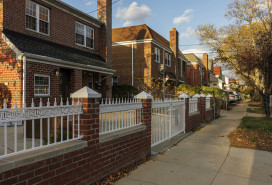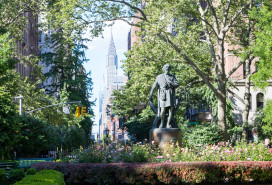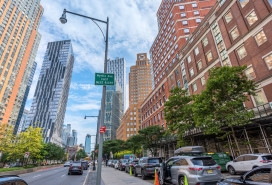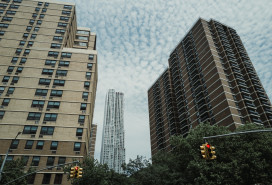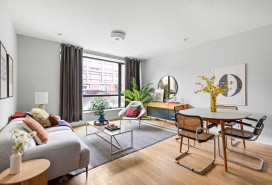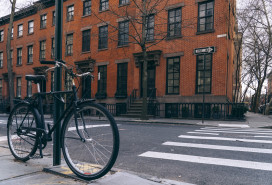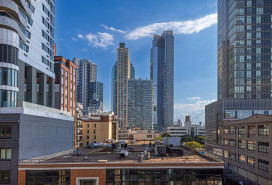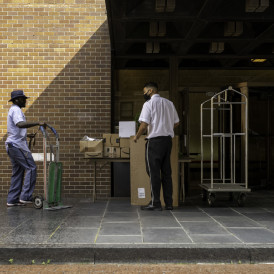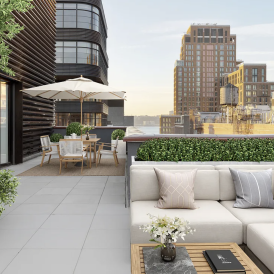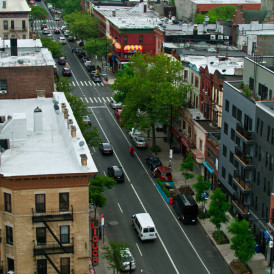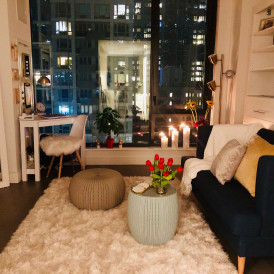I've saved $60,000 for a down payment. What can I get in Manhattan?

You've gotten together a down payment on a Manhattan apartment, but is your chunk of change enough to get you there? Mirador Real Estate broker Chad Thomas weighs in on what you can afford on a relatively modest budget in this week's Buy Curious.
THE WISH LIST:
Q. I've got $60,000 for a down payment on an apartment in Manhattan--ideally a one-bedroom, but I'd be open to studios as well. I know that a lot of co-ops want buyers to put down at least 20 percent, and sometimes 50 percent or more. How do I find a co-op that's more lenient? Or, can I afford a condo on my budget?
THE REALITY:
If you only have $60,000 to put down, Manhattan is going to be a challenge, especially if you prefer a one-bedroom. While it's possible that you'd find a condo on your budget, at the moment there aren't any on the market for under $300,000 (i.e. roughly your budget assuming a down payment of 20 percent), according to StreetEasy. And I'd recommend finding an apartment that you can truly afford, not squeak into.
The first thing to understand is that as a buyer, it's not just about scraping together the 20 percent. It's equally important to show that you're financially healthy: you have a debt-to-income ratio better than about 28 percent, meaning that monthly mortgage payments and co-op maintenance fees are no more than that percentage of your take-home pay. (Some buildings have different requirements, and for the most part it's co-ops that really care about this number, rather than condos.) You'll also need enough cash on hand for after the deal closes--that is, at least one year of mortgage payments and maintenance fees in the bank. When buyers are financing, sellers and co-op boards look very closely at these factors.
It's true that some buildings are more flexible than others, though they rarely advertise the fact. Most will toe the line and tell you they need the basic "strong financials." If a building does promote that it's an "easy" building, that could be a red flag. If they don't seem to care, they may have issues with reserves and shareholders in arrears which can then affect the functions and financial health of the building. In this situation, trust your gut. As with most things in life, and especially in this city, if it sounds too good to be true it probably is.
Additionally, some buildings allow sublets or co-purchasing (you'll probably find this information in the listing), but they aren't necessarily going to let in someone who doesn't meet their baseline financial qualifications. It does, however, provide space for a buyer to purchase with a family member, should that be an option.
You don't mention whether you're working with a broker or not, and there are pros and cons to using one. But in this case, a good buyer's broker can help you navigate the landscape. Someone knowledgeable and well connected has a lot of unpublished institutional knowledge and relationships that can separate the good from the bad (and the good from the perhaps unrealistic) for the buyer, or get information from the listing agent or other agents who have done deals in the building. It's also important to note that a listing broker's job is to push the seller toward the most qualified buyer.
In my recent experience, I've found more affordable apartments in northern Manhattan, in neighborhoods like Inwood, Hamilton Heights and Washington Heights. The properties in these areas are mostly co-ops, but occasionally there are condos between $250,000 and $300,000. I recommend setting up an alert for your neighborhood and price parameters on StreetEasy, so you're notified as soon as new listings hit the market. Relatively inexpensive ones usually sell quickly, so you'll need to move fast.
Lastly, if you fit a very specific financial profile, you may qualify to buy a HDFC co-op, an affordable housing program with strict income caps, in buildings like the historic 409 Edgecombe, a 123-unit co-op in Harlem's Sugar Hill neighborhood. You can search using keywords like "HDFC" or "income-restricted," though that will turn up buildings, rather than co-ops that are actually for sale. Organizations like the Urban Housing Assistance Board have information about these units and can help you find them.
Where to find some bang for your buck:

Hudson Heights one-bedroom/one-bathroom co-op for $299,999: This three-room apartment at 870 West 181st Street, between Riverside Drive and Cabrini Boulevard, has dark walnut hardwood flooring, three closets and nine-foot ceilings. The building also has a live-in super, key-card laundry facilities and bike rooms.

Upper East Side one-bedroom/one-bathroom co-op for $299,000: This three-room apartment in a prewar building at 332 East 77th Street, between First and Second Avenues, "needs TLC" but has a large living room, eat-in kitchen and bedroom that will fit a queen bed. The five-story walk-up has a live-in super.

Harlem one-bedroom/one-bathroom restricted-sale co-op for $290,000: This 835-square-foot apartment is in a prewar building at 409 Edgecombe Avenue, between West 150th Street and West 155th Street, and has a living and formal dining room with high ceilings, wall moldings and original hardwood floors. The kitchen and bath "can use a facelift," according to the listing, but the building has a lobby attendant during daytime hours, resident super, laundry and a video security system.

East Village one-bedroom/one-bathroom restricted sale co-op for $280,000: This three-room apartment at 248 East Third Street, between Avenues B and C, is in an HDFC elevator building. The listing is sparse on detail, but the seller will accept a cash buyer only, with income restrictions.
Related:
The 3-percent-down mortgage you've never heard of that's available in NYC
6 hurdles that can stand between you and your mortgage—and what to do about them
Buying, renovating or refinancing next year? 5 mortgage trends to watch in 2014 (sponsored)
7 questions to ask about the building before you buy an apartment there (sponsored)

